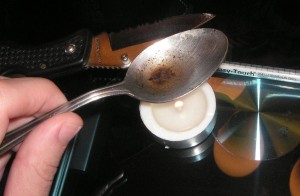Charlotte has a major heroin problem. The city is ranked fifth in the country when it comes to the sale and distribution of black tar heroin, much of which occurs in Charlotte’s more affluent communities. This problem has been described as Charlotte’s “invisible drug epidemic” and there are some disconcerting numbers to prove it.
 In 2013, the Charlotte-Mecklenburg Police Department – South Division, released reports showing that in 2013 south Charlotte heroin related overdoses and arrests increased by over 30 percent. What is also alarming is the average age of heroin users is decreasing as well. In a survey of heroin users, 33.3 percent first used heroin when they were 16-18 years old. Of those users surveyed, 53.2 percent said they could usually obtain heroin within 30 minutes. This easy accessibility can be attributed to the largely untouched market in the south charlotte area, which has generally had low gang activity making it a target for drug dealers to expand their market and find new customers.
In 2013, the Charlotte-Mecklenburg Police Department – South Division, released reports showing that in 2013 south Charlotte heroin related overdoses and arrests increased by over 30 percent. What is also alarming is the average age of heroin users is decreasing as well. In a survey of heroin users, 33.3 percent first used heroin when they were 16-18 years old. Of those users surveyed, 53.2 percent said they could usually obtain heroin within 30 minutes. This easy accessibility can be attributed to the largely untouched market in the south charlotte area, which has generally had low gang activity making it a target for drug dealers to expand their market and find new customers.
Heroin is an opiate that shares properties with commonly abused prescription painkillers such as OxyContin and Vicodin. These painkillers are being abused more and more over the last decade, causing addictions that required constant use just to feel “normal”. As more state governments began regulating these drugs the illegal market’s supply dwindled causing a substantial increase in prices. As prices rose, those abusing these painkillers have begun to turn to heroin as a much cheaper alternative at around nine dollars per bag versus 60-100 dollars per pill. It has also become a common practice for heroin dealers to offer deals for buying in bulk.
The sale of heroin in Charlotte has become increasingly easy. Phone numbers float around where a user can call and make an order, the dispatcher instructs the customer where to go (usually a safe place like a mall parking lot or a public park) and a runner meets the customer with the heroin; the exchange can take place without ever leaving the car.
 Charlotte Criminal Lawyer Blog
Charlotte Criminal Lawyer Blog

